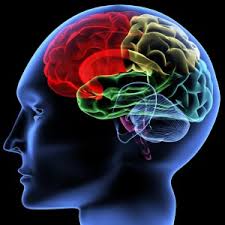Research behind why you keep losing your keys?
Friday, April 25th, 2014 7:00:18 by Kashif Mirza
Phones, keys and wallets, but also dentures, surfboards or wheelchairs. Just take a look at the lost property office to discover the fragile nature of human memory. But this is only what we lose away from home. And those everyday items that go astray in our own home or workplace? Do not despair: it happens to the best of us and has a logical explanation.
According to some research, forgetful is a common habit regardless of age and has nothing to do in your usual way with memory-related diseases. On average, a person misplaces up to nine articles a day and spends about 15 minutes a day to find them, affect these studies. Much of the blame for these memory lapses lies in our genetic inheritance; to which must be added stress, fatigue, multitasking and, in particularly serious cases, diseases such as depression or attention deficit disorders. The biggest factor of it all is the lack of planning (covered later in this article)
“It’s breaking at the interface of attention and memory,” says Professor of Psychology at Harvard University and author of The Seven Sins of Memory Daniel L. Schacter. And what does this mean? So basically a failure between the time we leave the object in place and are not able to change our minds and codify what we are doing and when we try to retrieve that memory. When we put sunglasses on entry, our hippocampus takes a sort of snapshot or after the time that serves as a reminder to us or mental note. It is important to pay attention to these actions to encode power. If we do not get the time, we will have lost the object. And what can contribute to the failure of memory? Well, for example, a change in mood between the time of encoding and retrieval, as Kenneth Norman, professor of psychology at Princeton University says. A familiar scene: Coming home hungry, loose keys or glasses and when you go to look for them, you have no idea where you left it.
According to a study conducted at the University of Bonn (Germany), the most forgetful people presents a variation in the dopamine D2 receptor gene (DRD2) which makes them more prone to memory lapses. ” The dismissal is quite common,” says Sebastian Markett, lead author of the study and a researcher in Psychology Neuroscience, who clarifies that about half of the grounds of forgetting observed in the study were related to genetic causes.
The disease of busy life Thus far gene and the functioning of our brain, but also these memory lapses are related to our modern lifestyle. And, it seems, are becoming more common among young people. Researchers at CPS Research, Glasgow (Scotland), who have called this type of forgetfulness “busy life syndrome” and that in the scientific world is known as “disorder of subjective cognitive impairment” (SCI), found that each time we are more forgetful by our hectic lifestyle and information overload. “Forgetfulness is a normal process of aging, but we have anecdotal evidence to suggest that is now affecting more and more young people as a result of multitasking at home or work and information overload from various media we consume today,” said Dr Alan Wade.
Pro active planning
The first step, and most obvious, to solve the problem is to find a place for each object, which also has some sense to us. Always put the keys in the hanger behind the door, reading glasses on the bedside table at night or your phone charger in the drawer of the room, is a start. Basically find a place and put these items in the same place each time.
Another technique, says Mark McDaniel, professor of psychology at Washington University in St. Louis and co-author of Memory Fitness: A Guide to successful aging is to think and even say out loud the action we are doing. Repeat aloud: “I’ll put the wallet on the dresser.” It also serves to visualize the action we want to do in the near future. Imagine tomatoes, lettuce and chicken before taking a trip to the supermarket.
Michael Solomon gives us a dozen tips on its website, as well as in the book How to Find Lost Objects. Before searching, you must first have an idea about where to do it; if not Ahó the object, you undo your steps, think about areas that tend to camouflage (behind the sofa cushion?) and always look fully with an order and not random, and think that small radius of 18 inches the wandering objects once deposited (the eureka area).
A gift last track: there is a gadget called Tile, once attached to the object, allows you to locate through a smartphone app and within range of up to 30 meters.
Short URL: https://www.newspakistan.pk/?p=43318

















